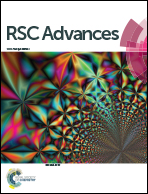Circumferentially oriented microfiber scaffold prepared by wet-spinning for tissue engineering of annulus fibrosus
Abstract
Repairing damaged annulus fibrosus (AF) is one of the most challenging topics for treating intervertebral disc (IVD) disease. Tissue engineering combining scaffolds with cells provides a promising solution. However, fabricating scaffolds with a circumferentially oriented fibrous structure similar to native AF remains a big challenge. In this study, we present an effective and convenient wet spinning strategy for fabricating an AF scaffold composed of circumferentially oriented poly(ε-caprolactone) microfibers. Cell culture experiments demonstrated that this scaffold could support AF cell attachment, proliferation and infiltration as confirmed by scanning electron microscopy (SEM), confocal microscopy, live/dead staining and a MTT assay, respectively. Histological, immunohistochemical staining, biochemical quantitative analysis and RT-PCR showed that the AF cells (AFCs) inside scaffolds could spread along the microfiber direction and secrete an AF-related extracellular matrix (e.g., glycosaminoglycans, collagen type I and II) which also oriented along the microfiber direction. As a result, the compressive and tensile properties were enhanced with increasing culture time. These results demonstrate the feasibility of using this new wet-spun microfibrous oriented scaffold for AFCs culture, and the potential application for regeneration of AF.


 Please wait while we load your content...
Please wait while we load your content...